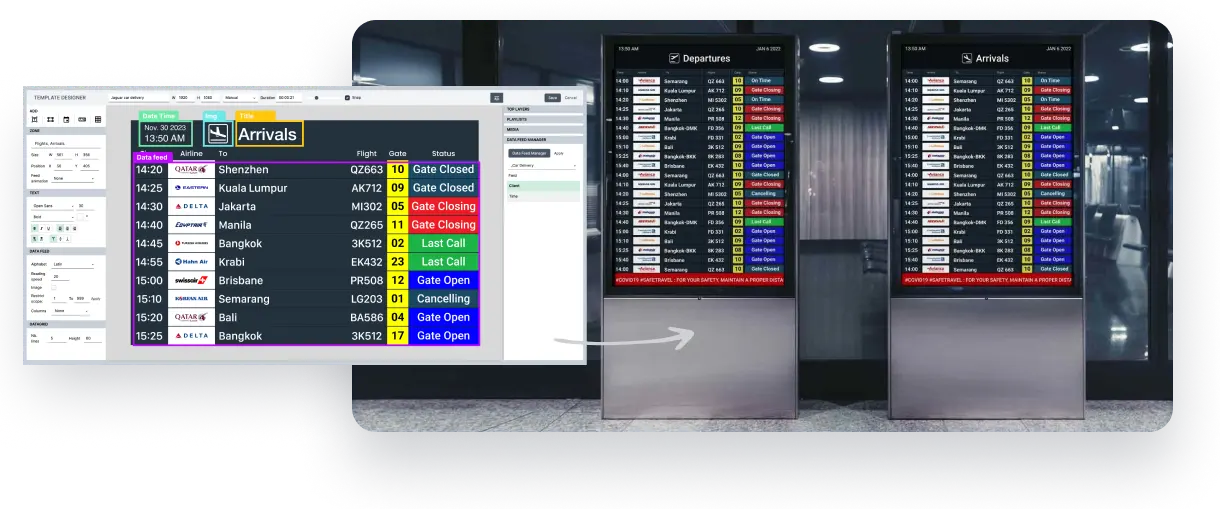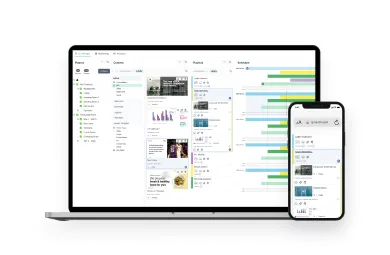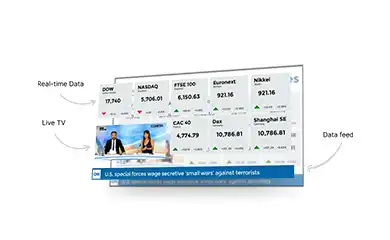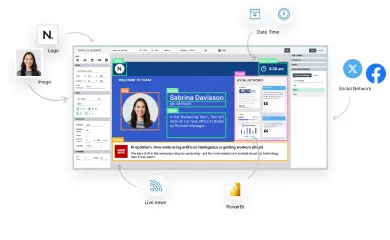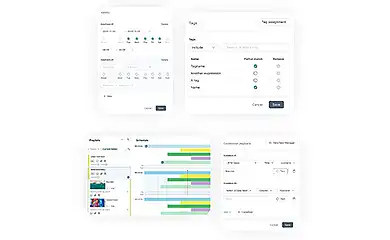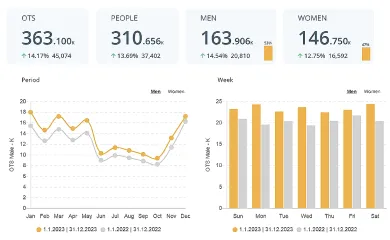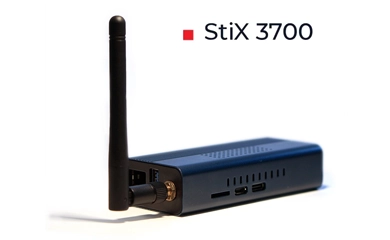Easily Integrate Live Data
Into Your Content
Easily integrate live data from various sources directly into your digital signage.
Harness the power of diverse data types to enrich and diversify your content.
Maintain up-to-date information with continuous and automated synchronization.
Share Live Data using Media RSS, JSON, and XML standards
Streamline the publication of live data, including news and weather updates. Navori Data Feed Manager ensures continuous and automatic information updates.
Use Built-in Connectors to Create a Social Media Board
Filter Twitter and Facebook feeds by region or language to deliver targeted messaging and seamlessly integrate live social media content alongside your corporate messages.

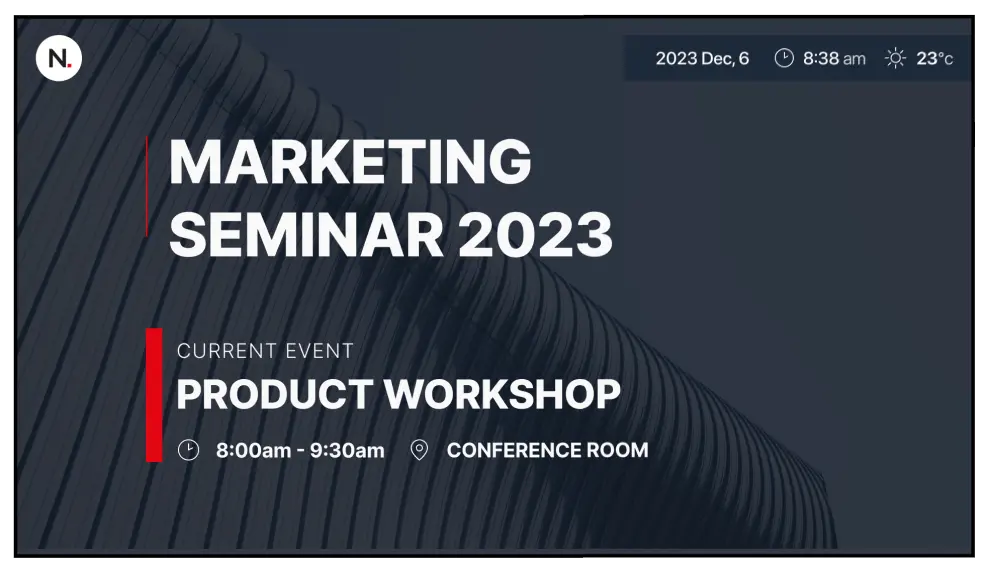
Screen Upcoming events, Meetings from Office 365 Calendar
Seamlessly sync data from Microsoft 365 and Google Calendar, and easily customize your displays using Navori’s intuitive Template and Ticker Designer apps.
Fine-tune Your Live Data with the Moderator and Lookup
Take control of your content with Navori Data Feed Manager’s filtering capabilities. Define rules for external data feeds to activate content on the fly.
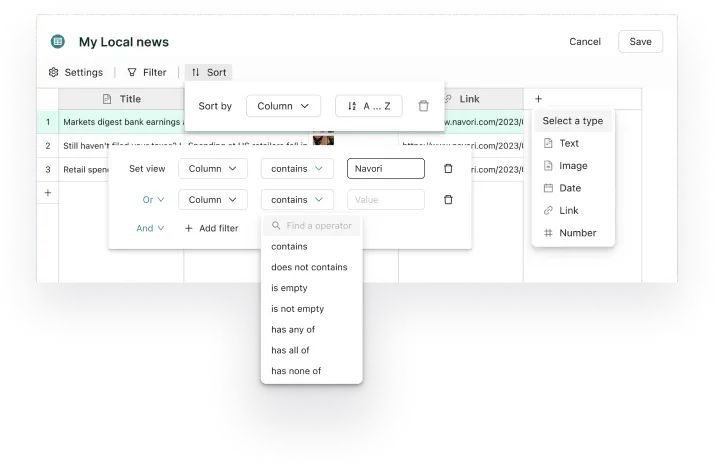
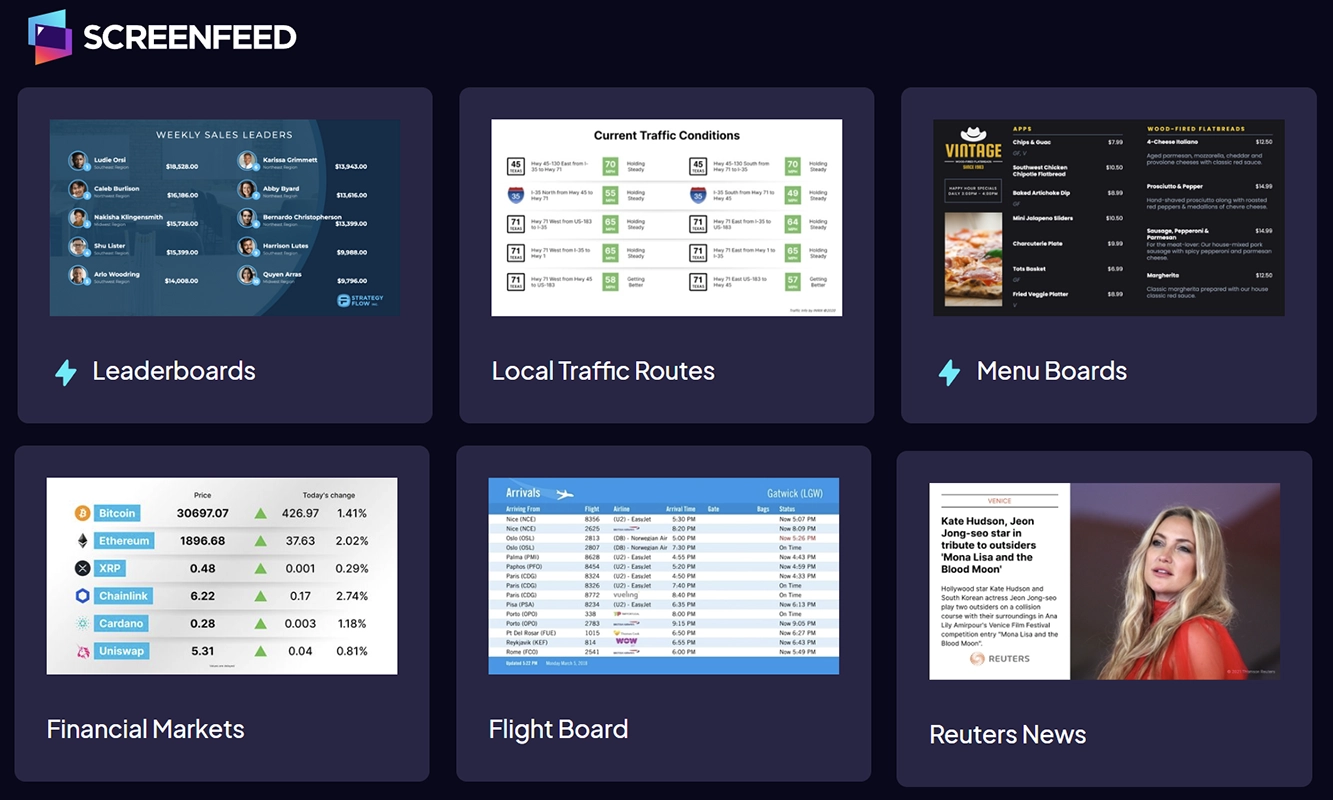
Easily integrate live data and graphics from Content Vendors
Integrate live content and graphics from any Content Vendor. Subscribe to Screen Feed and select from diverse live data sources to keep your displays fresh and engaging.
Take a Deeper Dive on ScreenFeed
Create your Connectors Using our API
Create custom connectors using the Navori API, allowing for advanced digital signage applications and complex scenarios.

